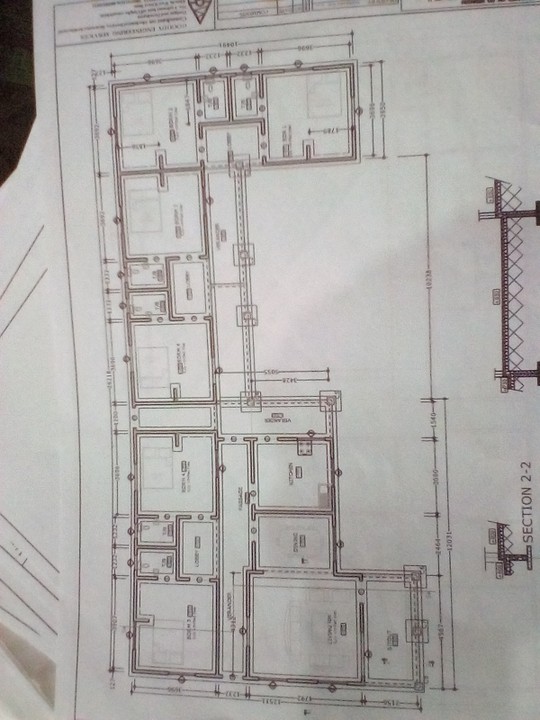To determine the number of blocks you will need to build a 12 by 12 room, you need information about the size and layout. The number of blocks required would depend on factors like the dimensions of each bedroom (length, width, height), the size of the blocks, thickness, shape, and design of the room.
However, you would likely need around 400 blocks to build a 12 by 12 room. The precise quantity would depend on the overall square footage and layout of the room design. This is a rough estimate, and the actual number can vary. It is recommended that you seek the expertise of a construction company to avoid common errors while determining the number of blocks to use in a building.
Determining the number of blocks is a common question prospective homeowners ask, especially after the building design phase. It is recommended you entrust professionals for your building project. This saves you time and money.
Building any project requires careful planning and estimating materials, including blocks. Accurate block estimation ensures efficient build, minimizes waste, and saves costs.
In this article, we will explore the factors determining the number of blocks required for a 12 by 12 room and why you must hire a professional for your building needs.
Factors that Affect Block Consumption
Several factors influence block consumption during the building process, and they include:
Size and Design:
The size and design of the room significantly impact the number of blocks required for construction. Here is how :
Square footage: The larger the room’s square footage, the more blocks are needed because larger rooms have more wall space, which requires more blocks to cover. The amount of blocks required for a three-bedroom flat, would be different from that of a 12 by 12 room.
The shape of the room: A room with a complex shape will require more blocks than a rectangular or square room because of the additional cuts and corners needed to fit the blocks together.
Height of the walls: High ceilings require more blocks to build taller walls.
Design features: Design features such as arches, pillars, and curved walls require more blocks to build and may result in additional blocks due to the need for precise cuts.
Type of Blocks:
The type of block used in construction, whether solid, concrete, or hollow, can significantly impact the number of blocks required for a three-bedroom flat. Different types of blocks vary in size, shape, and material composition, which can impact block consumption. Here is how:
Solid Blocks: Solid blocks are made of dense concrete and are typically used for load-bearing walls and structures that require high strength. Since they are solid, they have a smaller surface area than hollow blocks, so more blocks are needed to cover the same space. However, because they are strong and durable, fewer solid blocks may be necessary to achieve the desired structural stability.
Concrete Blocks: Concrete blocks are typically made of cement, sand, and aggregate and can be solid or hollow. They provide good strength and durability and are commonly used in various building projects. Concrete blocks come in multiple sizes and shapes, which can impact block consumption based on the size and design of the structure.
Hollow Blocks: Hollow blocks are concrete but have one or more hollow cavities inside. These blocks are lighter and easier to work with than solid blocks, making them popular for non-load-bearing walls and partitions. Since they have a larger surface area than solid blocks, fewer hollow blocks may be required to cover an area. However, they may not provide the same level of structural strength and durability as solid blocks, so more blocks may be needed overall to ensure stability.
Additionally, the block size, thickness, and shape also affect block consumption. Here is how:
Block size: Larger blocks cover more wall area, meaning fewer blocks are needed to build a wall of a given size.
Block shape: Blocks come in various shapes, such as rectangular, square, and interlocking. The shape of the block can impact how they fit together and the number of blocks required to cover a given wall area.
Block thickness: Using thicker blocks can result in a more robust wall with fewer blocks, while using thinner blocks may require more blocks to achieve the same wall thickness.
Window and Door Openings:
Window and door openings are crucial in block consumption during building construction. These openings require blocks to be cut and placed precisely to accommodate the frames and ensure proper fit and alignment. Here is how it affects block consumption:
Additional blocks for framing: Openings for windows and doors require additional blocks to create a solid and stable frame around the opening. The size and number of openings will determine the additional blocks needed for framing.
Waste due to cutting: To create the desired size and shape of an opening, blocks may need to be cut, resulting in waste. The larger the opening, the more waste will likely be generated as more blocks will be cut.
Reinforcement around openings: Openings in load-bearing walls often require additional reinforcement, such as concrete lintels, to distribute the load around the opening and maintain structural integrity. This reinforcement may require additional blocks.
Dimension of Building Plan:
The dimensions of a building plan can significantly affect block consumption in several ways:
Wall length: The total length of the walls in a building directly impacts the number of blocks required. Longer walls will need more blocks to cover the same height.
Wall height: The height of the walls also influences block consumption. Taller walls will require more blocks to cover the same length. In multi-story buildings, each additional story will increase the overall block count.
Roof design: The design of the roof, such as flat or pitched, impacts the amount of wall area that needs to be covered by blocks. More complex roof designs may require additional wall supports and reinforcement, increasing block consumption.
Partitions and internal walls: The number of internal walls and partitions also influences block consumption. A larger number of internal walls will require more blocks for construction.
Foundation:
The type and size of a building’s foundation can have a significant impact on block consumption in several ways:
Foundation size: The size of the foundation is determined by the building’s load requirements. Larger foundations require more blocks for construction.
Foundation depth: Deeper foundations, such as those required for structures on unstable soil, will require more blocks for construction.
Foundation width: Wider foundations provide a larger surface area for the structure’s weight distribution and require more construction blocks
Foundation type: Different foundation types, such as strip foundations, raft foundations, or pile foundations, have varying block requirements based on their design and load-bearing capacity
Hire the Best Company for Your Building Construction
The Building construction is complex and requires expertise at every stage to deliver a high-quality, durable, and safe infrastructure. We’re a trusted industry leader in building construction projects. By entrusting your building projects with an experienced construction firm like Dutum Group, with over 15 years of experience.

St Antonio Limited Construction is among the top construction companies in Nigeria, with a reputation for technical excellence founded on more than 20 years of experience.
At Dutum Group, our dedicated team shares a passion for delivering outstanding results, collectively pushing boundaries to exceed client expectations. Unwavering in our commitment to excellence, we consistently provide superior standards in construction, upholding the highest levels of craftsmanship and premium materials, ensuring outstanding quality in every aspect.
Here is why you should choose us:
Experience: With years of experience in the industry, St Antonio Limited brings a wealth of knowledge and expertise to every project.
Quality: Committed to delivering superior quality in every aspect of construction, St Antonio Limited to the highest standards of craftsmanship and materials.
Innovation: Constantly pushing the boundaries of innovation, Dutum Group utilizes the latest technologies and techniques to optimize efficiency and minimize environmental impact.
Customer Satisfaction: Customer satisfaction is paramount at Dutum Group. We prioritize open communication, transparency, and collaboration to ensure that each client’s vision is brought to life seamlessly.
Project management: At St Antonio Limited, we ensure project delivery on time, within budget, and meeting quality standards.
Exceptional Track Record: St Antonio Limited has completed numerous landmark projects in Abuja, earning the trust and respect of clients and industry peers alike.
Dedicated Team: At St Antonio Limited, we are passionate about what we do, consistently going above and beyond to deliver results that exceed expectations.
Commitment to Sustainability: St Antonio Limited is committed to sustainable construction practices, striving to minimize environmental impact and maximize energy efficiency in all its projects
For more information,
Estimating blocks for a 12 by 12 room requires careful consideration of various factors.
However, consulting with a construction company like St Antonio Limited is essential to ensure maximal satisfaction. Remember, accurate block estimation can save time, money, and resources. Always prioritize precision and consult with experts to ensure a successful construction of your building.





